Leopard geckos are among the most popular reptile pets, beloved for their docile nature, manageable size, and adorable appearance. Unlike many reptiles, these fascinating creatures are relatively low-maintenance, making them perfect for both beginners and experienced reptile enthusiasts. However, despite their adaptability, leopard geckos still require a properly set up habitat that mimics their natural environment to thrive in captivity. Creating the ideal leopard gecko habitat involves understanding their native habitat, temperature requirements, and behavioral needs. This comprehensive guide will walk you through everything you need to know to create a comfortable, stimulating, and healthy home for your leopard gecko companion.
Understanding Leopard Gecko Natural Habitat
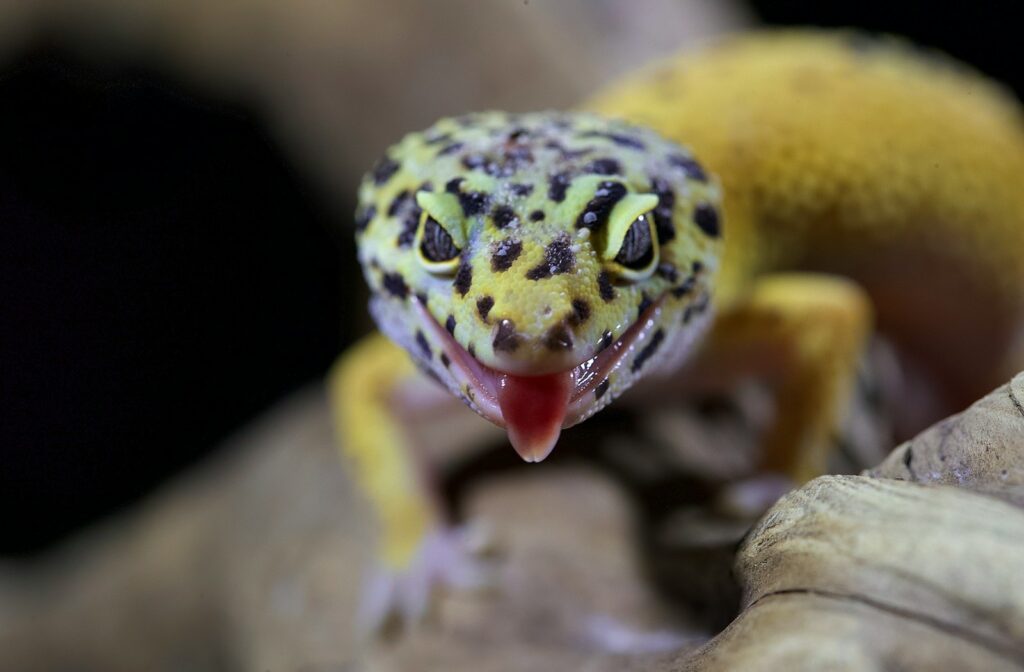
Leopard geckos (Eublepharis macularius) originate from the arid and semi-desert regions of Afghanistan, Pakistan, northwest India, and parts of Iran. In the wild, these nocturnal reptiles spend their days hiding under rocks or in burrows to escape the intense heat, emerging at night to hunt insects. Their natural habitat consists of rocky terrains with sparse vegetation, providing them with plenty of hiding spots and varying temperature zones. Understanding these natural conditions is crucial when designing a captive habitat that will keep your leopard gecko healthy and stress-free. By replicating elements of their native environment, you’ll help your gecko display natural behaviors and maintain optimal health throughout its 15-20 year lifespan.
Selecting the Right Enclosure Size
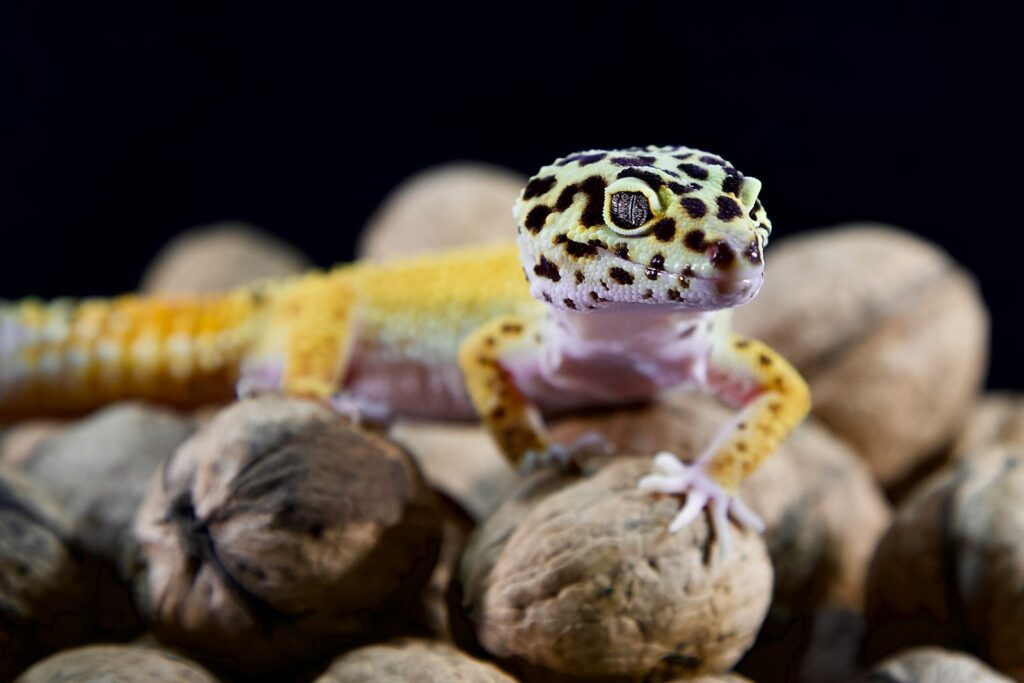
The foundation of a proper leopard gecko habitat begins with choosing an appropriately sized enclosure. For a single adult leopard gecko, a 20-gallon long tank (30″ x 12″ x 12″) is the minimum recommended size, though larger is always better. The horizontal space is more important than vertical height, as leopard geckos are terrestrial creatures that don’t climb like many other reptiles. If you plan to house multiple geckos, you’ll need to increase the tank size accordingly – add approximately 10 gallons for each additional gecko. Glass terrariums are typically the best option as they provide excellent visibility, maintain heat well, and are easy to clean. Avoid tall, vertical enclosures that waste usable floor space and opt instead for tanks that offer ample ground area for exploration, hunting, and thermoregulation.
Creating the Proper Substrate

Choosing the right substrate (bedding) for your leopard gecko’s habitat is critical for their health and safety. Avoid loose particle substrates like sand, gravel, or wood chips, as these can cause impaction if accidentally ingested during feeding. Safe substrate options include reptile carpet, non-adhesive shelf liner, paper towels, or newspaper for easy cleaning and replacement. For a more naturalistic look without health risks, consider textured ceramic tiles, which retain heat well and are easy to sanitize. If you’re experienced and confident in your husbandry practices, bioactive substrates with a proper mix of soil, sand, and clay can create a self-sustaining ecosystem, though these require more maintenance and monitoring. Whichever substrate you choose, ensure it’s kept clean and changed regularly to prevent bacterial growth and maintain proper hygiene within the habitat.
Establishing a Temperature Gradient
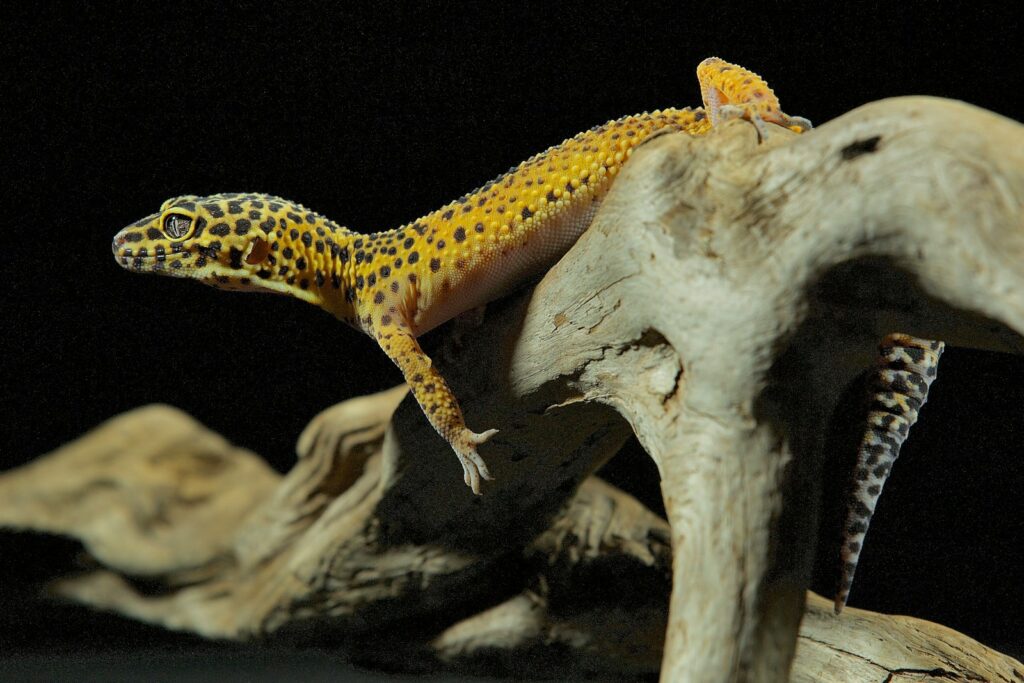
Leopard geckos need a temperature gradient in their enclosure to properly thermoregulate, as they cannot control their body temperature internally. The warm side of the tank should be maintained between 88-92°F (31-33°C) during the day, while the cool side should stay between 75-80°F (24-27°C). This temperature difference allows your gecko to move between areas to regulate its body temperature as needed. Use an under-tank heater (UTH) covering about one-third of the tank floor on one side, connected to a thermostat to prevent overheating. Supplement this with a low-wattage ceramic heat emitter or deep heat projector mounted above if additional ambient heat is needed. Always use digital thermometers with probes placed at floor level (where your gecko lives) to accurately monitor temperatures in both the warm and cool areas of the enclosure.
Managing Humidity Requirements

Maintaining proper humidity levels is essential for your leopard gecko’s health, particularly during shedding periods. The overall humidity in the enclosure should generally be kept between 30-40% to mimic their arid natural habitat. However, you should provide a humid hide on the warm side of the tank where humidity can reach 70-80% to assist with shedding and prevent stuck shed issues, particularly on toes, which can lead to circulation problems. This humid hide can be created using a plastic container with a hole cut in the lid, filled with damp sphagnum moss or paper towels that are regularly misted. Monitor humidity levels using a reliable hygrometer placed in the middle of the enclosure. If the overall humidity gets too high, it can lead to respiratory infections, while consistently low humidity can cause dehydration and shedding complications.
Providing Essential Hiding Spots
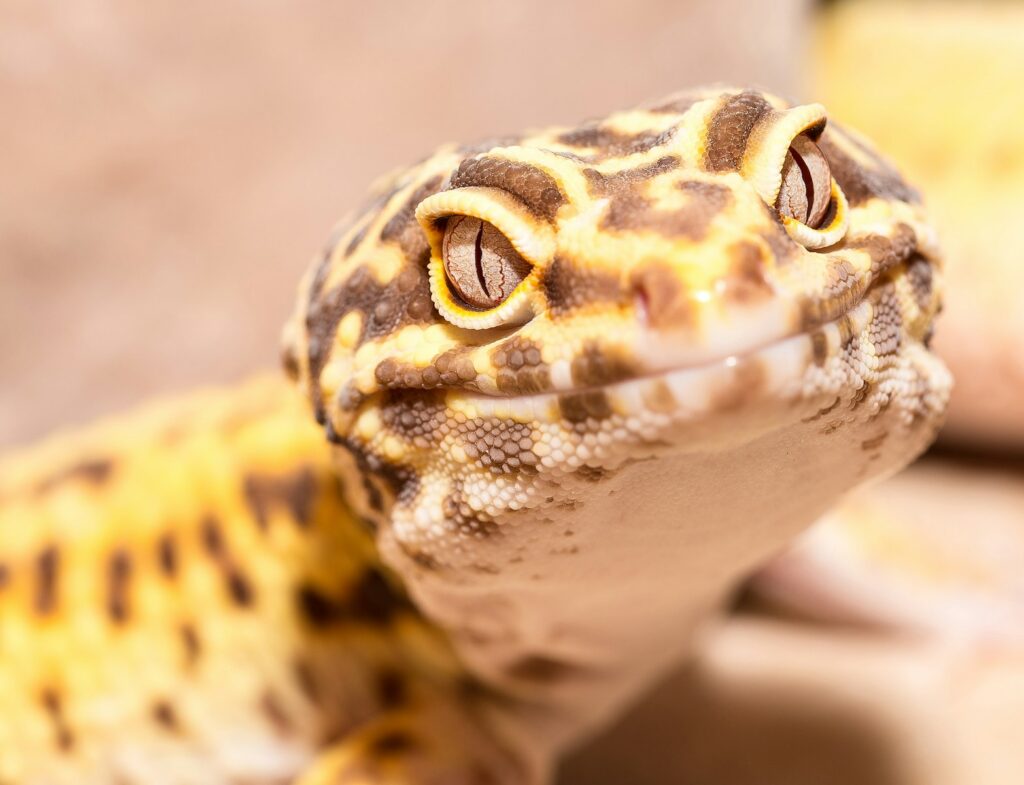
Leopard geckos are naturally shy creatures that require multiple hiding spots throughout their enclosure to feel secure. At minimum, provide three hides: one on the warm side, one on the cool side, and a humid hide for shedding assistance. These hides should be snug enough that your gecko feels secure when its body touches the sides but large enough for it to turn around comfortably. Commercial reptile caves work well, but you can also use modified plastic containers, cork bark, or even ceramic flower pots placed on their sides. The warm hide should be placed directly above the heating element, while the cool hide should be on the opposite end of the enclosure. Proper hiding spots not only reduce stress but also allow your gecko to self-regulate its exposure to heat, light, and humidity based on its physiological needs.
Selecting Appropriate Lighting
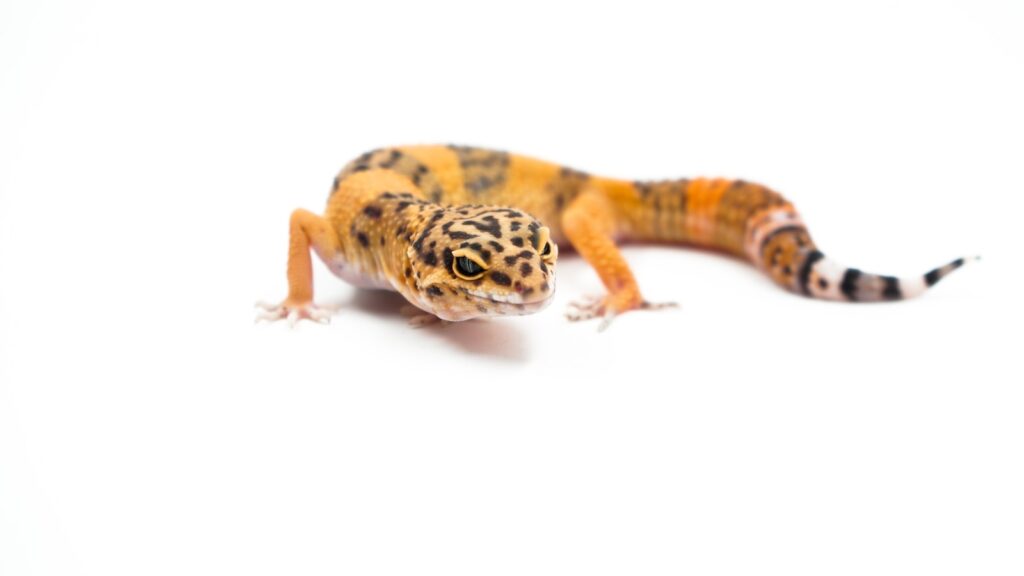
Unlike many reptiles, leopard geckos don’t require UVB lighting to synthesize vitamin D3, as they’re nocturnal creatures adapted to low light conditions. However, a low-level UVB light (2-5%) can be beneficial for overall health and natural behavior patterns when used for 10-12 hours daily. Maintain a day/night cycle by using a timer for any lighting to create a consistent routine that mimics natural conditions. Avoid bright lights that could stress your nocturnal pet, and never use colored bulbs (red, blue, etc.) as night lights, as these can disrupt their circadian rhythm and cause stress. If you need to observe your gecko at night, use a very dim white light or a specialized night-viewing bulb that won’t disturb their natural behavior.
Arranging Environmental Enrichment
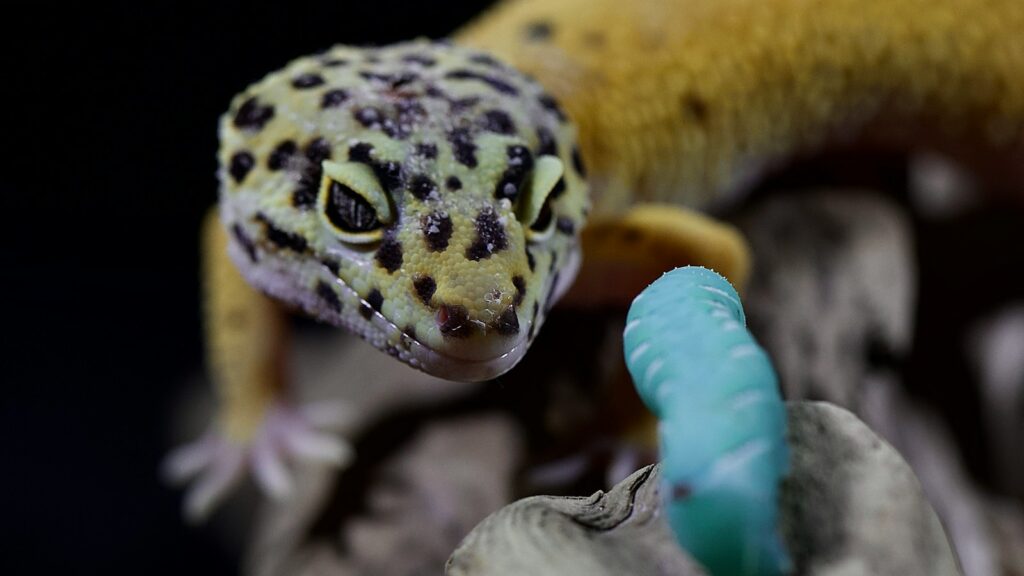
Creating an enriching environment is vital for your leopard gecko’s mental well-being and physical health. Include various textures and levels in the habitat using rocks, branches, cork bark, and commercially available reptile decor. These elements not only provide climbing opportunities but also create microclimates within the enclosure that your gecko can utilize for temperature regulation. Ensure all decor items are securely placed to prevent them from toppling and potentially injuring your pet. Avoid sharp edges that could cause injuries, and make sure there are no tight spaces where your gecko might become stuck. Regularly rearranging decor items (while maintaining the basic layout of hides and temperature zones) can stimulate natural exploratory behaviors and prevent boredom, keeping your leopard gecko mentally engaged and physically active.
Setting Up a Feeding Station
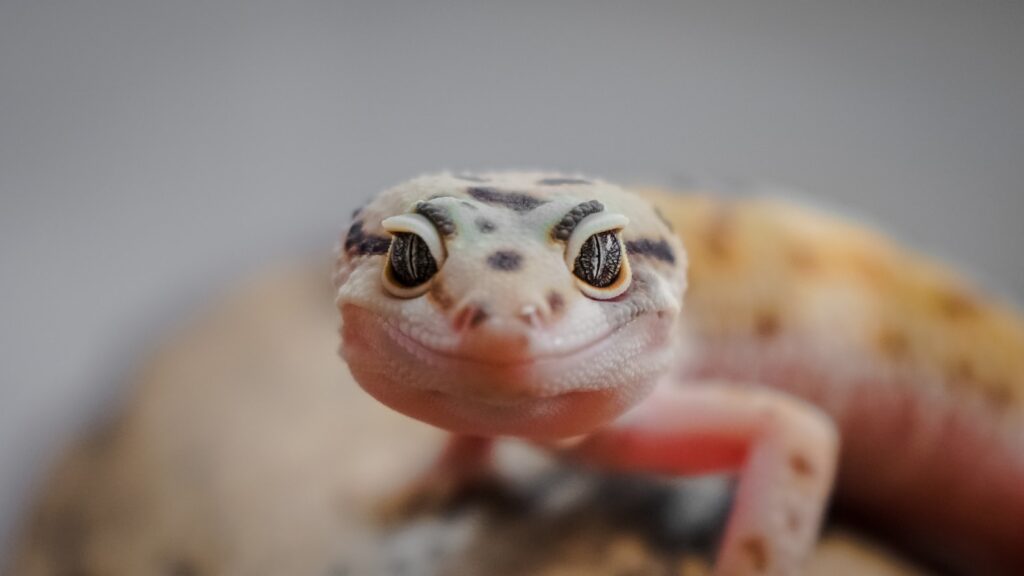
A designated feeding area can help maintain cleanliness in the enclosure and prevent substrate ingestion during feeding. Use a shallow dish or small container that’s stable enough not to tip over when your gecko climbs on it. For feeding live insects, consider using a feeding dish with smooth, high sides that insects cannot climb out of, or feed with tweezers to prevent escape and ensure your gecko is consuming all offered prey. If using calcium or vitamin supplements, a small shallow dish of calcium powder without D3 can be left in the enclosure for occasional self-supplementation, though the primary supplementation should occur by dusting feeder insects. Position the feeding station away from both the water dish and bathrooms areas your gecko tends to use to maintain hygiene and prevent contamination.
Installing a Proper Water Source
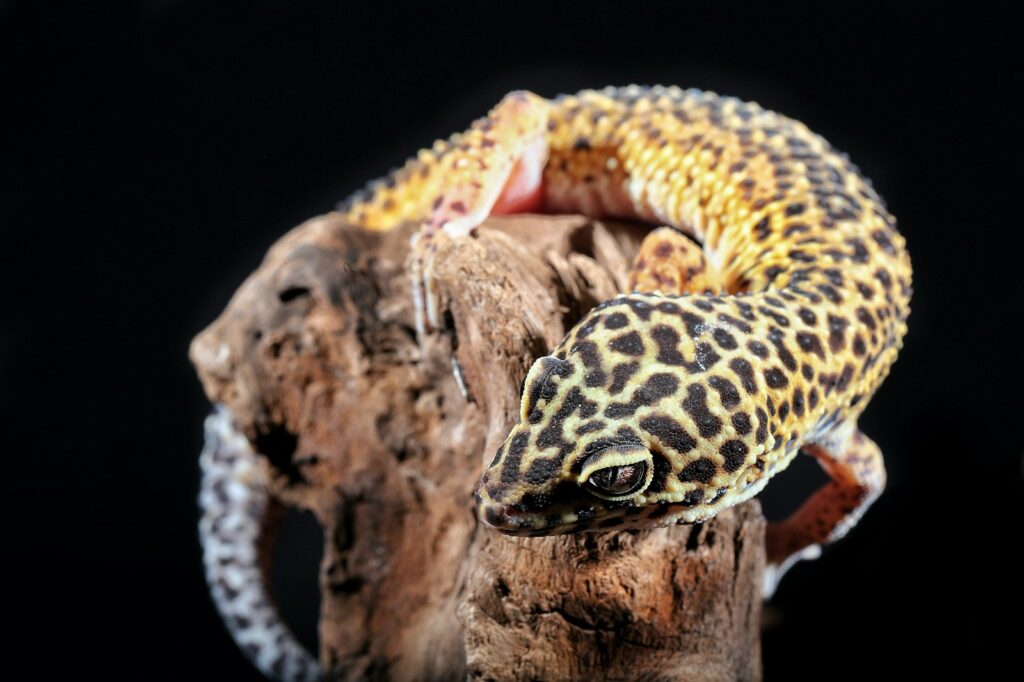
Though leopard geckos obtain much of their moisture from their food, a constant source of fresh water is essential for their health. Provide a shallow water dish that isn’t too deep to prevent drowning risk, ideally no deeper than your gecko’s shoulder height. The dish should be heavy enough that it can’t be easily tipped over but still easily accessible. Clean and refill the water dish daily to prevent bacteria growth and contamination. Position the water dish on the cooler side of the enclosure to minimize evaporation and reduce humidity issues. Some leopard geckos may rarely be seen drinking, but they often drink at night when owners aren’t watching, so never remove the water source even if it seems unused.
Maintaining Proper Sanitation
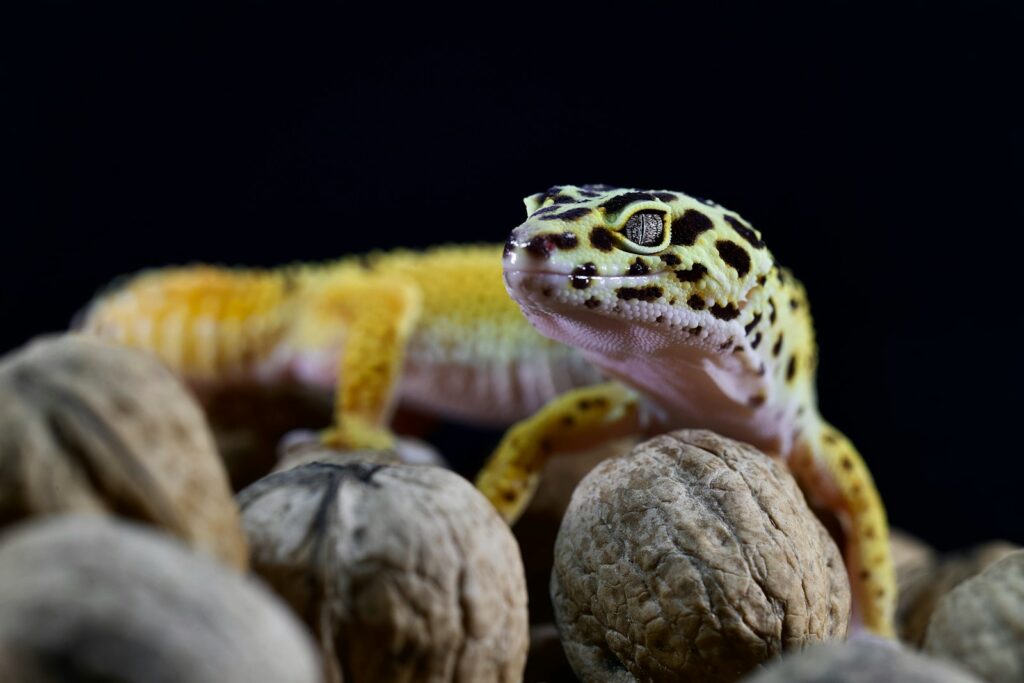
Regular cleaning is crucial for preventing disease and maintaining a healthy habitat for your leopard gecko. Spot clean the enclosure daily by removing feces, shed skin, and any uneaten food items to prevent bacterial growth and odors. Depending on your substrate choice, perform a full enclosure cleaning every 4-6 weeks, including replacing disposable substrates or thoroughly cleaning reusable ones. When conducting a deep clean, temporarily move your gecko to a secure container, remove and sanitize all decorations, hides, and dishes using a reptile-safe disinfectant, ensuring everything is completely dry before reassembling the habitat. Always wash your hands thoroughly before and after handling anything in your gecko’s enclosure to prevent the transmission of potential pathogens between you and your pet.
Monitoring Health Through Habitat Observation
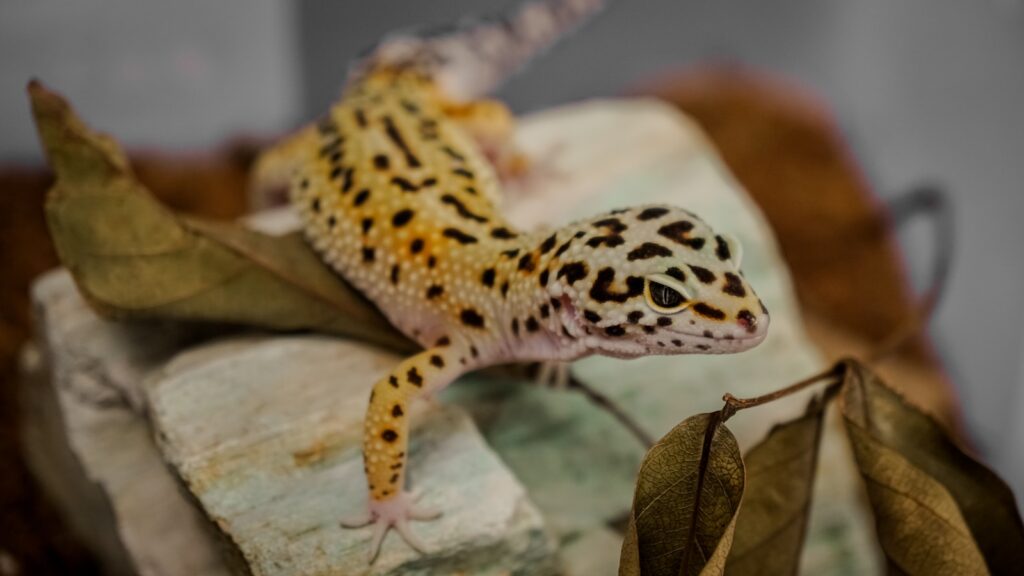
Your leopard gecko’s habitat can provide valuable insights into their health status when properly monitored. Unusual behavior like spending excessive time in the cool area might indicate the warm side is too hot, while constant hiding may suggest stress from improper housing conditions or illness. Regular fecal matter should be small, dark, and firm with a white urate portion; changes in consistency, color, or frequency can indicate dietary issues or parasites. Keep a habitat journal documenting temperature readings, feeding responses, shedding cycles, and behavior patterns to help identify any concerning changes early. Digital monitoring systems that track temperature and humidity can provide 24/7 data and alerts if conditions fall outside safe parameters, giving you peace of mind and ensuring optimal conditions even when you’re not actively checking the enclosure.
Adapting the Habitat as Your Gecko Grows

Your leopard gecko’s habitat needs will evolve as it grows from hatchling to adult, requiring periodic adjustments to accommodate its changing size and behavior. Juvenile geckos often benefit from simplified enclosures with paper towel substrates that allow easy monitoring of health and feeding. As your gecko matures, gradually introduce more complex environmental features while maintaining all the essential elements of proper temperature gradients and adequate hiding spots. Adult leopard geckos may become more territorial and establish preferred areas within their enclosure, so try to maintain these key locations when cleaning or rearranging. For aging geckos (10+ years), consider lowering hide entrances or adding ramps to accommodate potential mobility issues, and be particularly vigilant about maintaining proper temperatures as older reptiles may have more difficulty thermoregulating effectively.
Conclusion
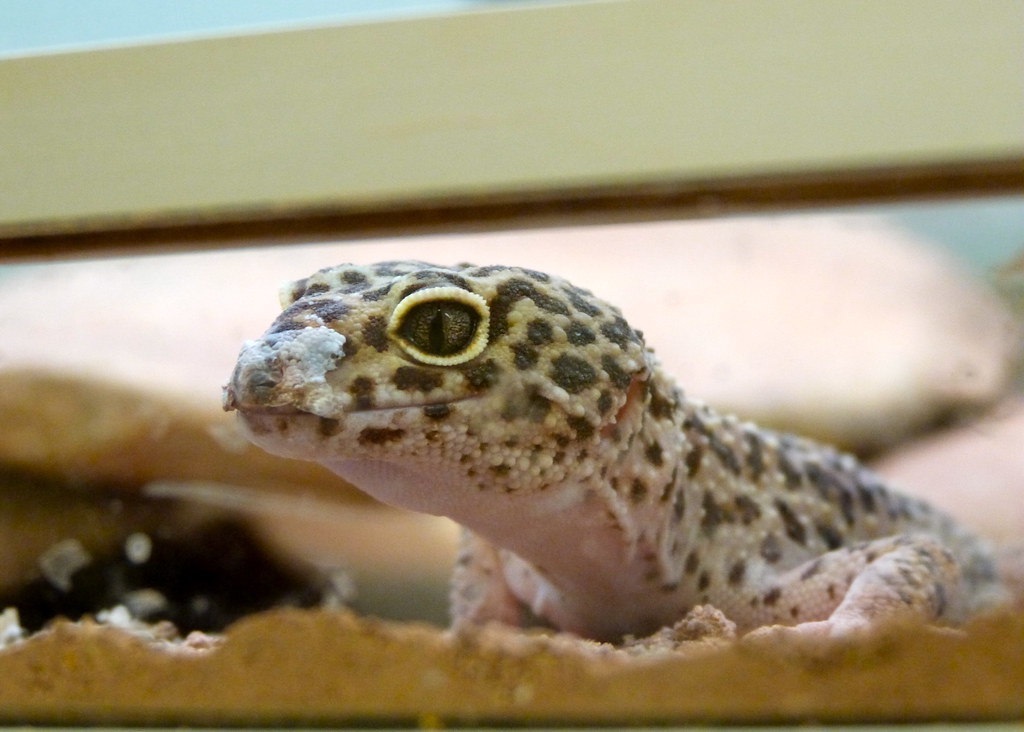
Creating the perfect leopard gecko habitat is a rewarding process that directly contributes to your pet’s health, longevity, and quality of life. By carefully replicating elements of their natural environment while addressing their specific needs in captivity, you’ll provide your gecko with a comfortable space to thrive. Remember that habitat maintenance is an ongoing process that requires regular monitoring and occasional adjustments. Pay attention to your gecko’s behavior, as they will often communicate their needs through how they interact with their environment. With proper setup and care, your leopard gecko will reward you with years of companionship, fascinating behaviors, and the satisfaction of knowing you’ve created an optimal home for your reptilian friend.







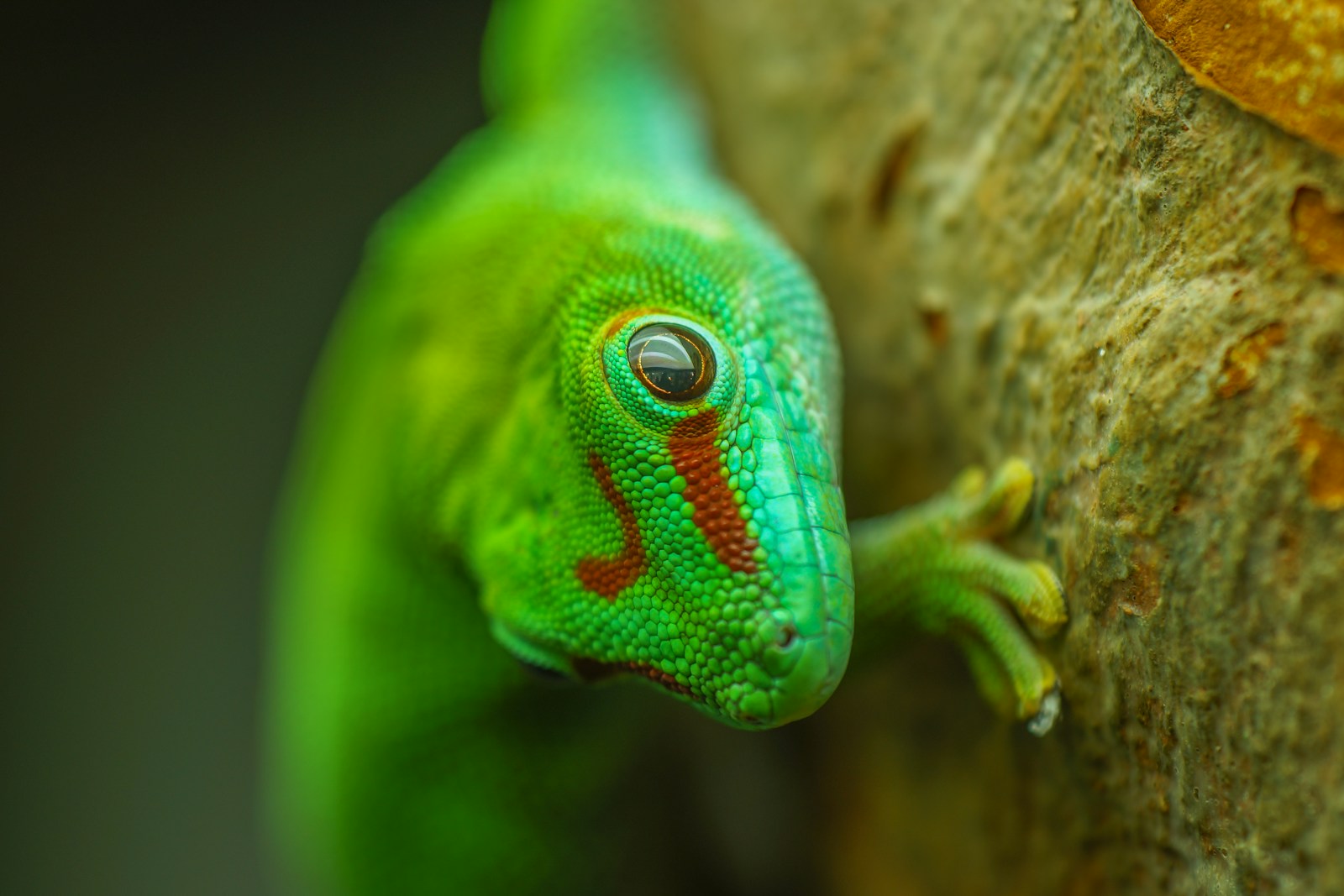
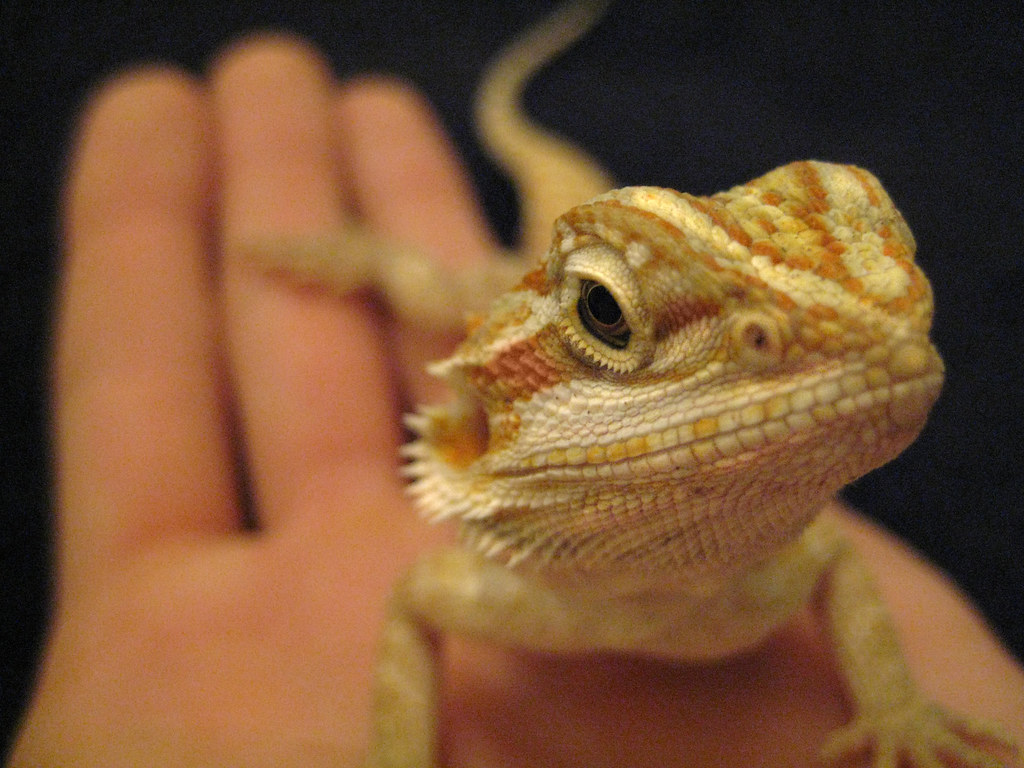


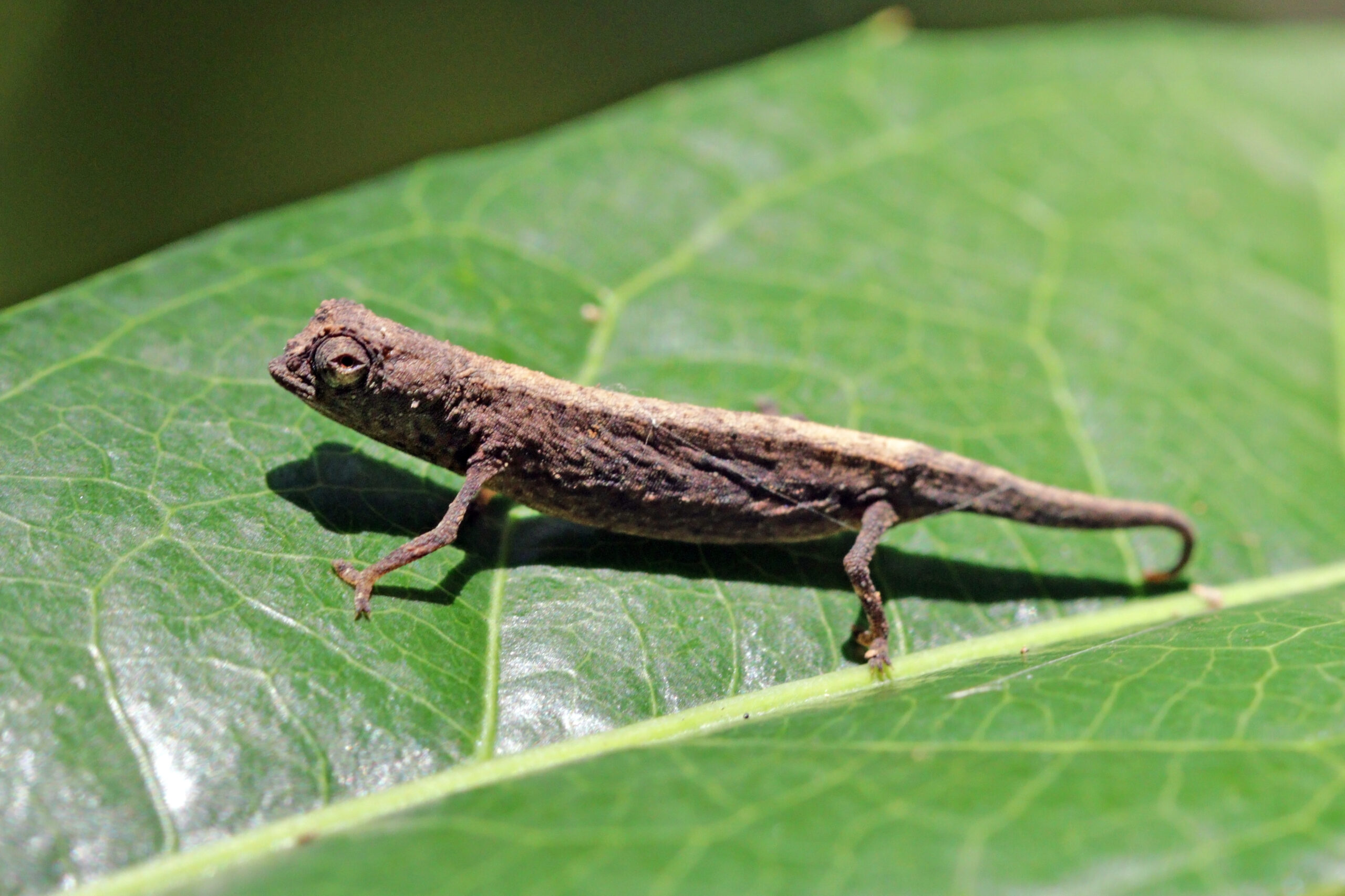




Leave a Reply